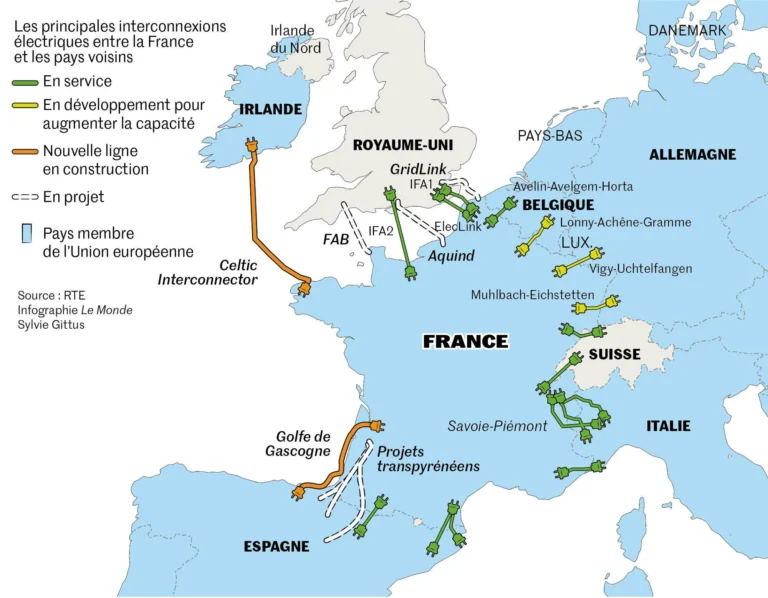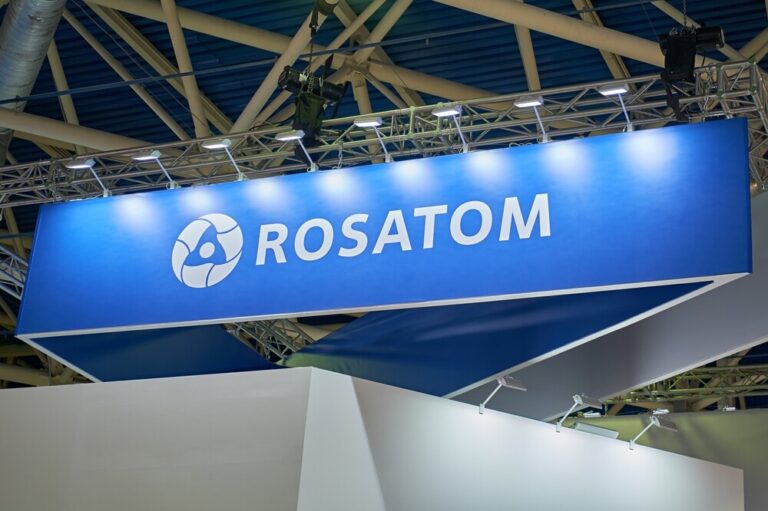
countries nuclear energy use
Import
Nuclear power is a major source of electricity worldwide, contributing to the production of approximately 10% of total electricity. Despite debates about its safety and economics, many countries still rely heavily on nuclear power to meet their energy needs. In this article, we will take a closer look at which countries use nuclear power the most, both in absolute numbers and as a percentage of total electricity production.
Global picture of nuclear energy
Today, there are about 440 nuclear reactors in operation in more than 30 countries worldwide. These reactors generate a total of about 390 gigawatts (GW) of electricity. In addition, about 50 new reactors are under construction, mainly in developing economies.
Nuclear power is an important part of the global strategy to reduce greenhouse gas emissions, as it produces minimal carbon emissions during operation. However, its adoption varies significantly between countries, with some embracing it as a mainstay of their energy policy and others rejecting it due to concerns about safety, cost or waste management.
Leading countries in nuclear energy production (in absolute numbers)
1. United States of America
The United States ranks first in the world in nuclear energy production, with 94 nuclear reactors in operation producing approximately 95 gigawatts (GW) of electricity. Nuclear energy accounts for approximately 20% of total electricity production in the US.
US nuclear power plants are mostly located in the eastern part of the country, with states such as Illinois, Pennsylvania and South Carolina hosting the most reactors. Despite its leadership in production, the US has built few new reactors in recent decades, with most coming online in the 1970s and 1980s.
2. France
France has 56 nuclear reactors with a total power of approximately 63 GW, making it the second largest producer of nuclear energy in the world. What sets France apart is the percentage of electricity generated from nuclear energy, which reaches approximately 70% of the total, the highest percentage worldwide.
France launched its ambitious nuclear program after the 1973 oil crisis, aiming to reduce its dependence on imported fossil fuels. The majority state-owned company Électricité de France (EDF) operates all of the country's nuclear power plants.
3. China
China is currently operating 52 nuclear reactors with a total power of approximately 50 GWAlthough this only represents about 5% of the country's total electricity production, China is rapidly expanding its nuclear program.
With 17 reactors under construction and dozens more in the pipeline, China is expected to surpass the United States as the world's largest nuclear power producer in the coming decades. The expansion is part of the country's efforts to reduce its dependence on coal and tackle serious air pollution problems.
4. Russia
Russia has 38 nuclear reactors with a total power of approximately 29 GW, producing approximately 20% of the country's electricity. In addition, Russia is currently manufacturing 4 new reactors and has plans for more.
Through its state-owned corporation Rosatom, Russia is also a leading exporter of nuclear technology, building reactors in countries including India, Turkey, Bangladesh and Egypt. Russia has also been a pioneer in the development of floating nuclear power plants.
5. South Korea
South Korea operates 24 nuclear reactors with a total power of approximately 23 GW, which produce approximately 30% of the country's electricity. The country has developed significant domestic expertise in nuclear technology and has recently entered the global nuclear reactor export market, with the Barakah project in the United Arab Emirates being its first major international venture.
Although the previous government had announced plans to phase out nuclear power, the current administration has reversed this policy, recognizing the importance of nuclear power in achieving carbon emission reduction goals.
Countries with the highest percentage of nuclear energy in their energy mix
1. France: 70%
As previously mentioned, France has the highest proportion of nuclear energy in its energy mix worldwide, with approximately 70% of its electricity comes from nuclear power plants. This has allowed France to maintain relatively low carbon emissions from the energy sector and reduce its dependence on imported fuels.
2. Slovakia: 53%
Slovakia has 4 nuclear reactors which produce approximately 53% of the country's electricity. The country's two nuclear power plants are located in Bohunice and Mochovce. Two additional reactors are under construction in Mochovce, which are expected to further increase the share of nuclear energy.
3. Ukraine: 51%
Despite the challenges from the Chernobyl accident in 1986, Ukraine continues to rely heavily on nuclear energy, with 15 reactors which produce approximately 51% of the country's electricity. Europe's largest nuclear power plant, the Zaporizhia plant with six reactors, is located in Ukraine.
4. Hungary: 48%
Hungary has 4 nuclear reactors at the Paks station, which produce approximately 48% of the country's electricity. Hungary has reached an agreement with Russia to build two additional reactors, aiming to maintain a high share of nuclear energy in the future.
5. Belgium: 47%
Belgium has 7 nuclear reactors which produce approximately 47% of the country's electricity. However, the country has legislated to phase out nuclear power, with all reactors scheduled to be closed by 2025. This decision has sparked debates about energy security and carbon emissions, with recent discussions about possibly extending the operation of some units.
Emerging nuclear powers
1. India
India is currently operating 23 nuclear reactors with a total power of approximately 7 GW, which represent just the 3% of total electricity production. However, the country has ambitious expansion plans, with 8 reactors under construction and more in design.
Of particular interest is India's thorium program, as the country holds approximately 25% of the world's thorium reserves. The development of reactors using thorium could provide India with greater energy independence.
2. United Arab Emirates
The United Arab Emirates (UAE) is the newest addition to the list of countries using nuclear energy. The Barakah nuclear power plant, the first in the Arab world, began operating in 2020. When the 4 reactors of the station, are expected to produce approximately 25% of the country's electricity.
This move is part of the UAE's efforts to diversify its economy away from oil and gas and reduce carbon emissions.
3. Turkey
Turkey is currently building its first nuclear power plant, Akkuyu, with 4 reactors which are expected to produce approximately 10% of the country's electricity when completed. The country also has plans for two additional nuclear power plants, in Sinop and Ignedas.
Countries moving away from nuclear energy
1. Germany
Germany, which once had one of the largest fleets of nuclear reactors, decided to phase out nuclear power after the Fukushima accident in 2011. The country's last nuclear reactor closed in April 2023, marking the end of the nuclear era in Germany.
This decision has sparked debate about the impact on the country's carbon emissions, as Germany has been forced to rely more on coal and natural gas, while expanding renewable energy sources.
2. Italy
Italy closed its last nuclear reactors in 1990, following a referendum held in 1987 after the Chernobyl accident. The country now imports significant amounts of electricity, particularly from France, including nuclear power.
3. Switzerland
Switzerland is currently operating 4 nuclear reactors which produce approximately 35% of the country's electricity. However, after the Fukushima accident, the country decided to phase out nuclear power, with the construction of new reactors banned and existing ones expected to operate until the end of their useful lives.
Future trends in nuclear energy
New technologies
Advanced reactor technologies, such as small modular reactors (SMRs) and Generation 4 reactors, promise improved safety, reduced costs, and greater flexibility. Countries such as the US, Canada, the UK, and China are investing heavily in these technologies.
Nuclear fusion
Although commercial production of nuclear fusion energy is still several decades away, international projects such as ITER in France are working to develop this technology, which promises nearly unlimited, clean energy with minimal waste.
Climate change and nuclear energy
As countries seek to reduce greenhouse gas emissions, many experts argue that nuclear power should play a major role in decarbonizing the global energy system. However, concerns about safety, cost and waste management remain significant obstacles in many countries.
Conclusions
The adoption of nuclear power varies considerably worldwide, with some countries relying on it for most of their energy needs and others abandoning it entirely. The largest nuclear power producers in absolute terms are the United States, France, China, Russia and South Korea, while countries such as France, Slovakia and Ukraine have the highest proportion of nuclear power in their energy mix.
The future of nuclear power will depend on many factors, including the success of new technologies in reducing costs and improving safety, public acceptance and climate change policies. While some countries are moving away from nuclear power, others, particularly emerging economies, are embracing it as a means of meeting their growing energy needs with low carbon emissions.



